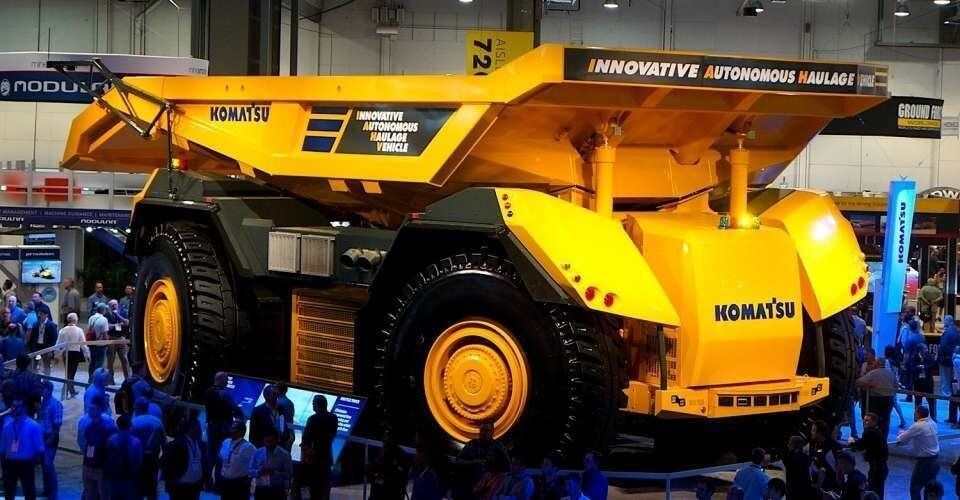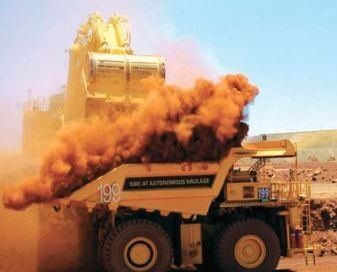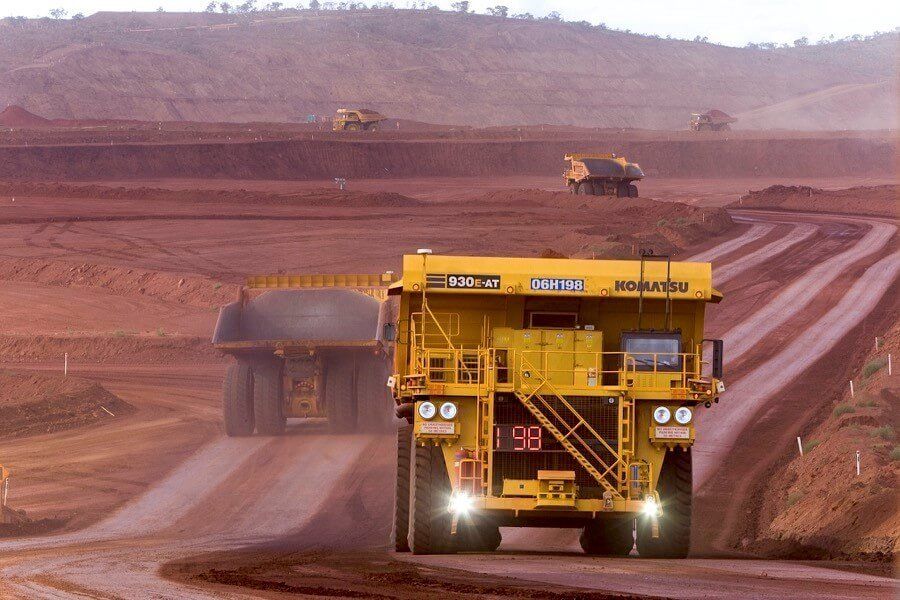Considerations when implementing autonomous haulage in open cut mining
Although autonomous vehicles have been under development for decades, their productive use in mining is relatively new. As the technology becomes more refined and accessible, it is now more commonplace for new mines, and those with sufficient remaining mine life to consider running an Autonomous Haulage System (AHS). Whilst their use has been accredited with improvements in safety, reductions in wear and increased utilization, there are AHS specific requirements which need to be considered in order to properly quantify any potential benefit an AHS fleet could deliver to an operation.
Additional Infrastructure Requirements
On an elementary level, AHS trucks need to have three basic pieces of information to operate safely.
- Their current location
- The route to their destination
- The location of other equipment
To answer all the questions above and have a control and communication network, Wi-Fi or Long-Term Evolution (LTE) coverage must be established throughout the trucks operating environment. This network allows the trucks to be controlled from great distances. For example, there are operations in Australia which have control centres in major city’s servicing remote mines, thousands of kilometres away (Suncor Energy, 2018).
In order to provide the first piece of information, the trucks need to be fitted with Global Positioning System (GPS) beacons. This is in addition to several other components like Lidar, Radar, vehicle controllers, and Wi-Fi. Although there are concepts around AHS dedicated trucks, current operating models are based on traditional manned machines which have been in service for many years. Therefore, in addition to the standard cost of each manned machine, they also need to be retrofitted to effectively “convert” them to AHS trucks.
The importance of accurate survey is highlighted by the need to provide the second piece of information. Routes and boundaries are set by the survey department. These are usually updated on a daily basis and then sent out to the trucks (through the site Wi-Fi network). Accurate survey accounts for the rapid rate at which the layout of a mining operation changes. Take, for example, a truck which on Monday is driving on a large stockpile and then dumping ore to build it northwards. In order for it to dump at that stockpile, a boundary had to be established by survey and then communicated to the truck. On Tuesday, the stockpile is closed as a dumping location and is reclaimed southwards, past the point of the previous tip head. On Wednesday the stockpile is re-opened as a dumping location. If the new tip head position is not re-surveyed, a truck could potentially drive straight off the stockpile because as far as it is aware, the tip head is still in the same position it was on Monday. This example demonstrates the need for high quality, frequently updated survey data to establish a safe working environment.
The final piece of information needed is the location of other equipment. This information is provided by retrofitting both heavy and light vehicles in the AHS operating area with GPS, network capability and emergency stops which effectively pause the movement of the AHS fleet at the touch of a button. It is very important that all these systems are reliable to establish a safe and efficient operating environment. Most AHS control systems will effectively halt operations when other equipment comes within a truck’s operating “bubble”. Inaccurate locations may cause unwarranted interference with haulage operations. Generally, if a heavy or light vehicle’s location is completely lost (loss of GPS or Wi-Fi signal) it will result in the trucks automatically pulling up until the location can be re-established.
Staff Training
At this point in time, there are no exclusive autonomous mining environments. Other equipment like dig units, graders and light vehicles still need to operate in a mine around AHS trucks. Their operators need to be trained in how to properly interact with AHS equipment. This takes on different forms depending on which piece of equipment is operating with the trucks. For example, a dig unit operator would need to learn how to use the network to set a load or stop point for the autonomous trucks in order to instruct the trucks when to reverse into position for loading and when to leave the loading point. They would also need to know how to position their bucket for an AHS truck as it can be used as a reference point by the truck for positioning correctly.
Light vehicle users would need to know how their behaviour affects the productivity of trucks. Depending on how the rules of the environment are set up, a light vehicle could hold up a truck by being parked in the opposite lane of an oncoming truck. A clear understanding by staff of the rules-based system which governs an AHS environment is needed for safe and productive mining.
Local Climatic Conditions
An operations communication network and equipment GPS are relied upon by the trucks to navigate the mine. However, in addition to this, the trucks are usually fitted with Radar and Lidar to detect obstacles and avoid collisions. The effectiveness of all these systems is impacted by the weather. Radar and Lidar, as hazard detection devices, can be quite sensitive to things like dust or snow.
Figure 2 illustrates challenging conditions faced by AHS operations at Rio Tinto’s West Angela’s Mine. The operation is well known for its dusty production environment which can have a detrimental impact on the AHS fleets productivity. It is important that operational delays caused by the weather at an individual site are understood and then managed by mine operations, along with being accounted for during mine planning.
Mine Design
Although improvements are always being made to the capabilities of AHS fleets, they currently require special consideration when designing infrastructure like pits and stockpiles. In general, this refers to working space design factors such as maximum gradients, minimum turning circles, and minimum road widths. If the working environment is not set up to allow for these requirements, there is a risk of un-necessarily triggering the autonomous trucks safety systems (Radar, Lidar, GPS Proximity) to stop the truck. These design factors are of particular importance when introducing AHS to an already producing operation. Pit designs may need to be reviewed and modified, impacting stripping ratios and ultimately costs.
Road Maintenance
This is somewhat related to road design in that the AHS system is unforgiving of poor construction and maintenance. Larger open pit operations tend not to have the level of accuracy commonly found in the civil construction industry. If this trend is carried forward when an AHS fleet is implemented it can result in frequent delays. Strict adherence to AHS specific design factors is needed by the pit development team.
Poor road conditions which result in incidents where rocks are dropped from trays can set off the Radar/Lidar emergency stop systems and interrupt production until someone is sent out to investigate and remove any obstruction. Had this same obstacle been present in a manned vehicle, the operator may have been able to drive around the obstacle and simply call for a clean-up.
Mine Planning
As mentioned, Mine Planning needs to account for AHS delays due to poor weather conditions, in which a manned fleet may have continued to operate. Understanding how localized conditions will affect the AHS trucks and to what degree, is usually initiated once the AHS trucks are on site. To this end, there is usually an implementation period for the technology to be established and understood and for staff to be trained. A common implementation method is to use a manned fleet in areas of the mine where ore is being sourced. This is usually kept separate to the AHS fleet in order to avoid delays in feeding the crusher and obtaining that important revenue stream. The AHS fleet will then be set up in a separate area of the mine where pre-stripping of waste is needed. This creates a pit-to-dump AHS only area, where all the fixed and mobile infrastructure required to run AHS trucks can be calibrated to the specific site. This will minimize the impact on the operation. It can also serve as a training facility, where staff can be introduced to and gain experience in the operation of an AHS fleet before it is rolled out, sitewide.
Once management has confidence in the operation of the AHS fleet, it can then be integrated into the main operation with manned trucks. The AHS trucks will usually maintain their assignment to waste runs until the stockpile and run of mine (ROM) areas have been properly set up for their use. Following this, the remaining manned trucks can be retrofitted, and the operation can exclusively run autonomous trucks.
It is the job of the Mine Planner to account for these initial requirements for segregation and then adjust the plan as unforeseen delays may occur. Data gathered from the implementation period, will also help to predict future performance and thus create more accurate mine development plans.
Conclusion
Up to now, the implementation of AHS fleets in mining has been undertaken by large firms. This is mainly due to the experimental nature of the technology. Now that AHS is being rolled out on a wider basis, it is becoming accepted as a permanent part of a modern mining operation. Although the technology has been proven to deliver improvements in equipment utilization, safety, and mechanical wear, it is also important to carefully consider the potential for safety compromises due to poor environmental controls, or the negative impact on productivity due to inadvertent triggering of safety systems. In addition, the impact of design control factors on the economics of the operation should be considered.
Interested in finding out more about how AHS could benefit your operation? Contact us or get in touch with Aidan directly.
Komatsu, 2016. Komatsu launches innovative autonomous haulage vehicle at MINExpo 2016 [online]. Available from: <www.mining.com>[Accessed 3rd December 2018].
Suncor Energy, 2018. Technology at Suncor: Autonomous Haulage Systems [online]. Available from: <www.youtube.com> [Accessed 3rd December 2018].
Komatsu, 2009. Autonomous Haulage System –Komatsu’s Pioneering Technology. Deployed at Rio Tinto Mine in Australia, Views 2009 #2, p10.
Jamasmie, C, 2018. Rio Tinto speeds up driverless fleet expansion in Australia [online]. Available from<www.mining.com> [Accessed 3rd December 2018
Grayson, W, 2016. Komatsu unveils Autonomous Haulage Vehichl, a mining truck that doesn’t even have a cab [online]. Available from www.equipmentworld.com [Accessed 3rd December 2018]
Subscribe for the latest news & events
Contact Details
Useful Links
News & Insights




